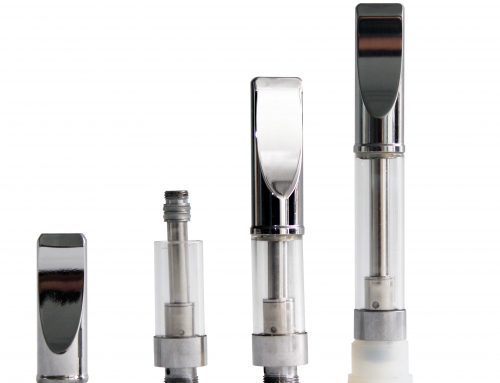The Safety of Mixing CBD and THC Oils: Exploring Benefits, Risks, and Best Practices
As CBD (cannabidiol) and THC (tetrahydrocannabinol) gain popularity for their potential therapeutic benefits, individuals may wonder about the safety of mixing these two cannabis compounds. Mixing CBD and THC oils has become a common practice among cannabis enthusiasts seeking a balanced experience. In this comprehensive article, we delve into the safety considerations, potential benefits, risks, dosage guidelines, and legal aspects of mixing CBD and THC oils. By exploring these factors, individuals can make informed decisions and responsibly navigate the world of CBD-THC combination.
Before proceeding, it’s crucial to understand that individual responses to cannabinoids can vary. Furthermore, the legality of CBD and THC oils may differ across regions, so it is important to consider local laws and regulations.
Exploring the Potential Benefits of Mixing CBD and THC Oils:
-
Enhanced Therapeutic Potential: CBD and THC interact synergistically to produce what is known as the “entourage effect.” Research suggests that the combination of these compounds may produce enhanced therapeutic effects compared to using them individually. For instance, CBD has been shown to have anti-inflammatory and anxiolytic properties, while THC can provide pain relief and relaxation. By mixing CBD and THC oils, the potential benefits may be amplified.
-
Balanced and Personalized Experience: One of the key advantages of mixing CBD and THC oils is the ability to customize the cannabis experience to suit individual preferences. Some individuals may seek the potential therapeutic benefits of CBD while minimizing the psychoactive effects of THC. Finding the right balance of CBD to THC ratios allows for a tailored experience that meets personal needs and goals.
-
Targeted Symptom Management: Research
has indicated that the combined use of CBD and THC oils may have positive implications for targeted symptom management. For instance, the CBD-THC combination has shown promise in alleviating symptoms associated with conditions such as chronic pain, multiple sclerosis, epilepsy, and chemotherapy-induced nausea and vomiting. By harnessing the potential synergistic effects of these cannabinoids, individuals may experience improved symptom relief and an overall enhanced quality of life.
Examining the Potential Risks and Safety Considerations:
-
Psychoactive Effects and Individual Sensitivity: One of the primary concerns when mixing CBD and THC oils is the psychoactive effects of THC. THC is known for its intoxicating properties, which can cause euphoria, altered perception, and sedation. It’s essential to understand individual sensitivity and tolerance levels to THC, as the psychoactive effects may vary from person to person. Starting with low doses and gradually increasing can help individuals find their optimal CBD-THC ratio and minimize any unwanted psychoactive effects.
-
Drug Interactions: Both CBD and THC have the potential to interact with certain medications. CBD can inhibit the activity of specific enzymes responsible for metabolizing many prescription drugs, potentially resulting in altered blood levels and efficacy. Individuals taking medications should consult with a healthcare professional or pharmacist to assess potential interactions and determine appropriate dosages and schedules.
-
Impaired Cognitive Function: While CBD is generally considered non-impairing, THC can impair cognitive function, motor skills, and attention. Mixing CBD and THC oils should be approached with caution, especially when engaging in activities that require mental acuity, such as driving or operating machinery. Understanding personal limitations and adjusting dosages accordingly is crucial for ensuring safety during activities that demand full cognitive function.
-
Legal Considerations and Product Quality: The legality of CBD and THC oils can vary greatly depending on the jurisdiction. Some regions have legalized both compounds, while others may have stricter regulations. It’s important to research and adhere to local laws and regulations to avoid legal repercussions. Additionally, when purchasing CBD and THC oils, individuals should prioritize products from reputable sources that undergo rigorous testing for quality and consistency.
Best Practices for Mixing CBD and THC Oils:
-
Start Low and Go Slow: When combining CBD and THC oils, it’s recommended to start with low doses and gradually increase to find the optimal ratio and dosage for individual needs. This approach allows individuals to gauge their sensitivity to the compounds and minimize the risk of adverse effects.
-
Seek Professional Guidance: Consulting with healthcare professionals experienced in cannabinoid therapy can provide valuable insights and guidance. They can help assess individual health conditions, potential drug interactions, and recommend appropriate dosages for mixing.CBD and THC oils. Healthcare professionals with knowledge in cannabinoid therapy can also provide personalized recommendations based on specific health goals and conditions.
-
Understand the CBD-THC Ratio: CBD-THC ratios in oils vary, and it’s important to understand the intended effects of different ratios. Higher CBD ratios tend to provide more medicinal benefits with minimal psychoactive effects, while higher THC ratios may offer stronger psychoactive effects. Experimenting with different ratios allows individuals to find the balance that suits their desired therapeutic outcomes and personal preferences.
-
Keep a Journal: Maintaining a journal to track the effects of mixing CBD and THC oils can be helpful. Note the dosages, ratios, time of administration, and any observed changes in symptoms or experiences. This record can assist in identifying the most effective combination, making adjustments as needed, and enhancing overall self-awareness of individual responses.
-
Prioritize Product Quality and Safety: When purchasing CBD and THC oils, opt for products that have undergone rigorous testing from reliable manufacturers. Look for certificates of analysis (COAs) to ensure product purity, accurate labeling, and absence of contaminants. Quality products should be free from pesticides, heavy metals, and harmful solvents.
-
Practice Responsible Consumption: Responsible consumption is vital when mixing CBD and THC oils. Set clear intentions, understand personal limits, and create a safe environment for consumption. Avoid driving or operating heavy machinery while under the influence to avoid any potential safety risks. Practice moderation and be mindful of personal health and well-being.
-
Monitor Your Body’s Response: Each individual’s endocannabinoid system is unique, meaning the effects of mixing CBD and THC oils can vary. Pay attention to how your body responds to different ratios and dosages. If any adverse effects or discomfort arise, adjust the dosage or consider alternate options.
-
Stay Informed: The field of cannabis research is continuously evolving. Stay updated on the latest scientific findings, regulations, and best practices for the responsible use of CBD and THC oils. Emerging studies and expert opinions can provide valuable insights into maximizing the benefits and minimizing the risks associated with mixing these compounds.
In conclusion, the safety of mixing CBD and THC oils depends on various factors, including individual sensitivity, dosages, ratios, and personal health considerations. While there are potential benefits to combining CBD and THC, responsible and informed use is essential. By following best practices, seeking professional guidance, and staying informed, individuals can optimize their experiences and potentially harness the therapeutic potential of CBD-THC combination safely. As with any health-related decision, it’s recommended to consult with healthcare professionals before incorporating CBD and THC oils into your wellness routine.

